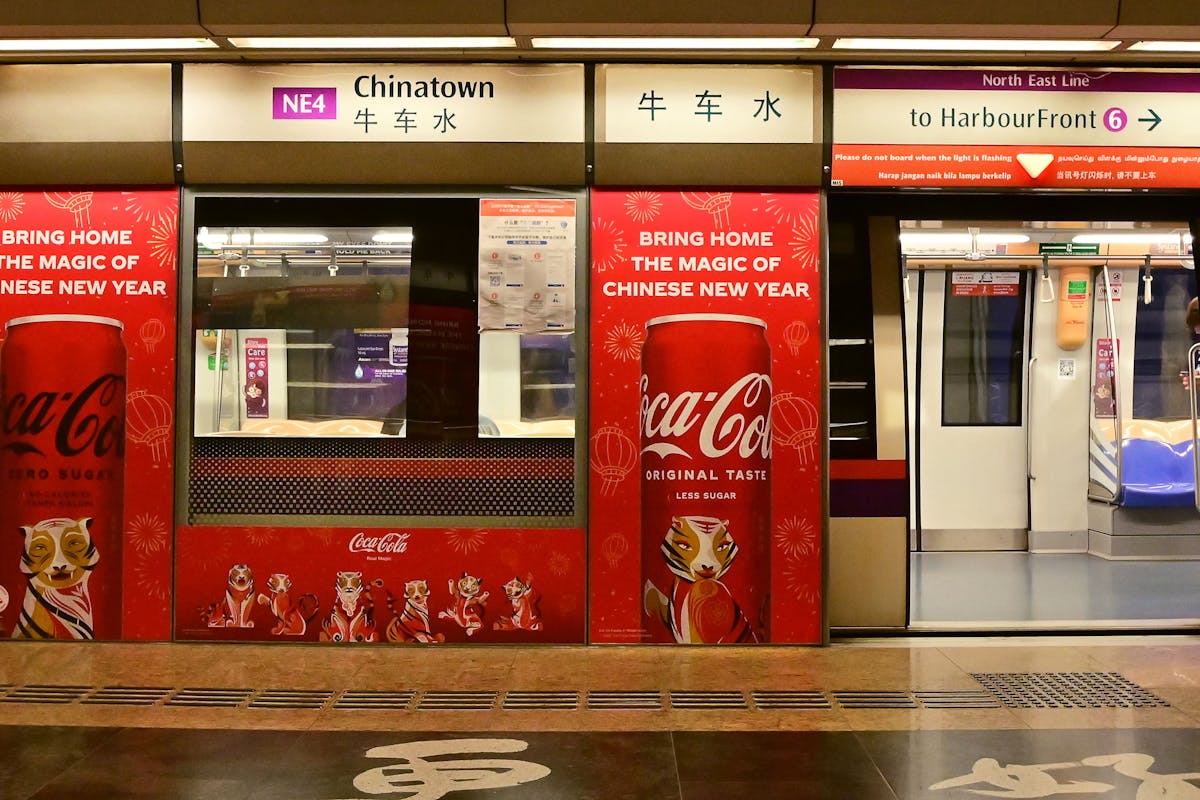- Singapore’s MRT system, known for its efficiency and cleanliness, has significantly improved with expansions like the North-South Line.
- The Circle Line and Downtown Line expansions enhanced city connectivity, reducing travel times and improving commuter experiences.
- Continuous upgrades and comprehensive planning by SMRT Corporation and LTA have ensured the MRT’s reliability and efficiency.
- Stringent maintenance and advanced technology, such as automated fare collection, contribute to the MRT system’s success and public satisfaction.
Singapore’s Mass Rapid Transit (MRT) system is known for its efficiency, cleanliness, and reliability. Over the years, the country has continuously improved and expanded its network to cater to the growing population and increasing demand for public transportation. This blog will celebrate key achievements in Singapore’s MRT development that have shaped the way people commute in the city-state.
Opening of North-South Line
The North-South Line was the first MRT line to be opened in Singapore back in 1987. Spanning from Jurong East to Marina Bay, this line revolutionized public transportation in Singapore by providing a fast and convenient way for commuters to travel across the island. It laid the foundation for future MRT lines and set a high standard for reliability and efficiency.
Introduction of Circle Line
The Circle Line was introduced in stages between 2009 and 2011, connecting various parts of Singapore, such as Buona Vista, Serangoon, and Dhoby Ghaut. Managed by Singapore’s SMRT Corporation Ltd, this line not only improved connectivity within the city but also reduced travel time for commuters transferring between different MRT lines. The Circle Line marked a significant milestone in Singapore’s MRT development by enhancing accessibility and convenience for passengers.
Extension of East-West Line
The East-West Line is one of the oldest MRT lines in Singapore, having been operational since 1987. Over the years, several extensions have been made to this line to improve connectivity and accessibility for residents living in areas like Pasir Ris, Tuas West, and Changi Airport. These extensions have not only facilitated smoother journeys for commuters but also supported urban development along these corridors.
Launch of Downtown Line

The Downtown Line was launched in three stages between 2013 and 2017, providing access to areas like Bukit Panjang, Little India, and Expo. This line expanded the MRT network to reach more residential neighborhoods and commercial hubs, making it easier for residents to commute to work, school, or leisure activities. The Downtown Line demonstrated Singapore’s commitment to enhancing public transportation infrastructure for the benefit of its citizens.
Factors Contributing to Milestones and Successes
You now know about the four key milestones that have shaped Singapore’s MRT network. But what factors have contributed to the reliability and efficiency of this public transportation system? Here are four key factors that have contributed to the success of Singapore’s MRT:
Continuous Upgrading
Singapore’s MRT network is constantly being upgraded to meet the changing needs and demands of commuters. The lines operated by SMRT Corporation Ltd, under the leadership of their CEO, Ngien Hoon Ping, are regularly maintained and upgraded to ensure smooth and safe operations. This proactive approach has contributed significantly to the network’s high-reliability rate.
Comprehensive Planning
The Land Transport Authority (LTA) in Singapore has been instrumental in planning and coordinating the development of the MRT network, taking into consideration population growth, urbanization, and land use patterns. This comprehensive planning has allowed for the smooth integration of MRT lines with other modes of transportation, such as buses and taxis, resulting in a seamless and efficient public transportation system.
Stringent Maintenance Regime
The MRT system in Singapore is known for its reliable and efficient operations, thanks to a stringent maintenance regime. The LTA regularly conducts maintenance checks and has strict guidelines in place to ensure that all trains and infrastructure are well-maintained. This has helped to minimize disruptions and breakdowns, ensuring a smooth and reliable commuting experience for passengers.
Embracing Technology

Singapore’s MRT network has also benefited from the use of advanced technology. One notable example is the implementation of an automated fare collection system, allowing for cashless payments and reducing the time spent at ticketing machines. The use of real-time train tracking systems also helps to improve service reliability and provide timely updates to commuters in case of any delays or disruptions.
These factors showcase Singapore’s commitment to providing a world-class public transportation system for its citizens and visitors. As the city-state continues to grow and evolve, it is certain that the MRT network will play a crucial role in meeting the increasing demand for efficient and sustainable transportation options.
Singapore’s Mass Rapid Transit (MRT) system exemplifies a commitment to efficiency, cleanliness, and reliability, standing as a testament to the nation’s dedication to enhancing public transportation. The development milestones, such as the opening of the North-South Line to the launch of the Downtown Line, coupled with continuous upgrading, comprehensive planning, stringent maintenance, and embracing of technology, have collectively shaped Singapore’s MRT into a world-class transportation network. This network not only facilitates seamless commutes across the city-state but also significantly contributes to Singapore’s urban development and the well-being of its residents and visitors.

